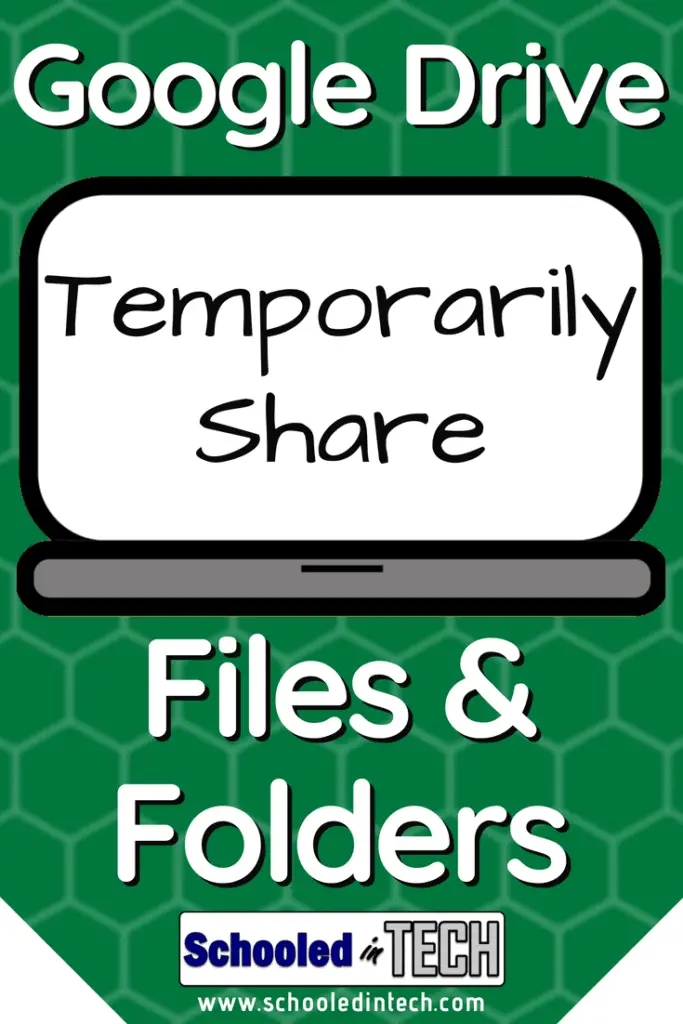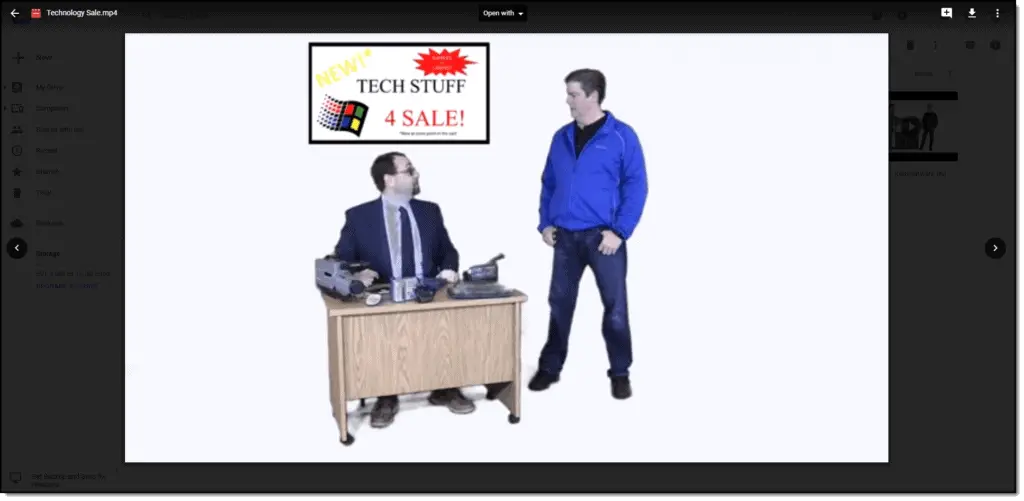As an educator, you have a ton of important things on your plate. Researching the ins and outs of cloud storage doesn’t need to be one of them. Let me do that for you.
If you have Google Drive for Education then you as a teacher and all of your students have an unlimited amount of storage space in Google Drive.
Plus, all of your files are available on you computer, tablet, Chromebook, and mobile device anytime you need them. You can even access them while offline.
If Google Drive was nothing more than a large bucket to save your files, that in itself would be huge for education, but it is so much more than that.
Here’s 6 tips every Google Drive user needs to know.
Use Google Drive Offline on a Chromebook
As I mentioned before, Google Drive files can be accessed whether you are online or offline. However, you do need to enable this feature on some devices.
Enable Offline Files on Chromebooks & Windows PCs
- Open up Chrome and go to drive.google.com
- Click on the cog wheel (settings) in the top right corner

- Check the box next to Offline
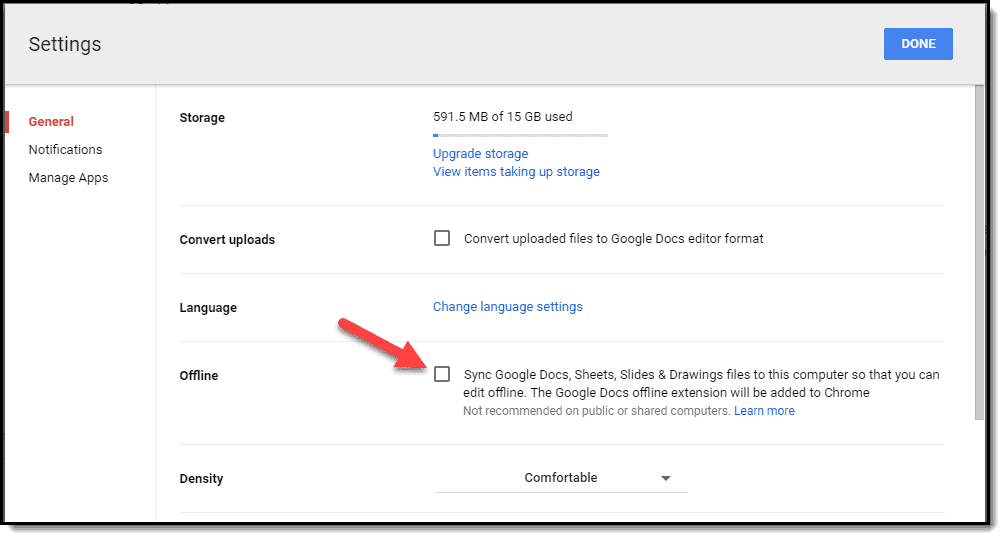 Chrome will now make your Google Docs, Sheets, Slides & Drawings files available offline. You can also create new files while offline. Any changes you make to your existing files and any new files you create will automatically sync to your Google Drive the next time you are online.
Chrome will now make your Google Docs, Sheets, Slides & Drawings files available offline. You can also create new files while offline. Any changes you make to your existing files and any new files you create will automatically sync to your Google Drive the next time you are online.
Share & Stream Videos from Google Drive
Do you have videos that you want to share with students and/or parents? Most people’s go to place to share videos is YouTube.
There are a lot of pros to using YouTube, but there are cons too. For example, when a video plays on YouTube’s website, it shows other video suggestions on the right side of the screen.
Even if you embed the video in your website, after the video is over YouTube will recommend other videos. You have no control over what videos are recommended and often times the videos have nothing to do with what you video was about.
One way to avoid this is to share your video from within Google Drive instead. Users can still maximize the video if they want to, but when the video is finished no other videos will be recommended.
You can share a video within Google Drive the same way you share a folder or Google Doc. Most of the time you will just give view access and share a link to the video or paste the link into your website or blog.
You can see examples of videos being streamed from Google Drive on my I’m A PC, I’m A Chromebook: Reboot page. You may have a laugh too!
Find anything in Google Drive with advanced search
Whether you meticulously organize your Google Drive or you just save to everything to the root of you Drive, Google search makes finding your files easy.

- Want to find all files with “5th period” in the file name?
- Want to list all of your Google Sheet documents?
- Forgot what you named a Google Doc, but you know it had “study tips” in the text of the document?
Google search can easy help you find any of these things. Click on Advanced in the search box to narrow the results. You can even choose whether to search just files you own or files shared with you too.
You can even search text in pictures. If you upload an image of a piece of paper, a photo with text on a shirt, or a sign in the background, Google will try to read the text and you can find the results in search.
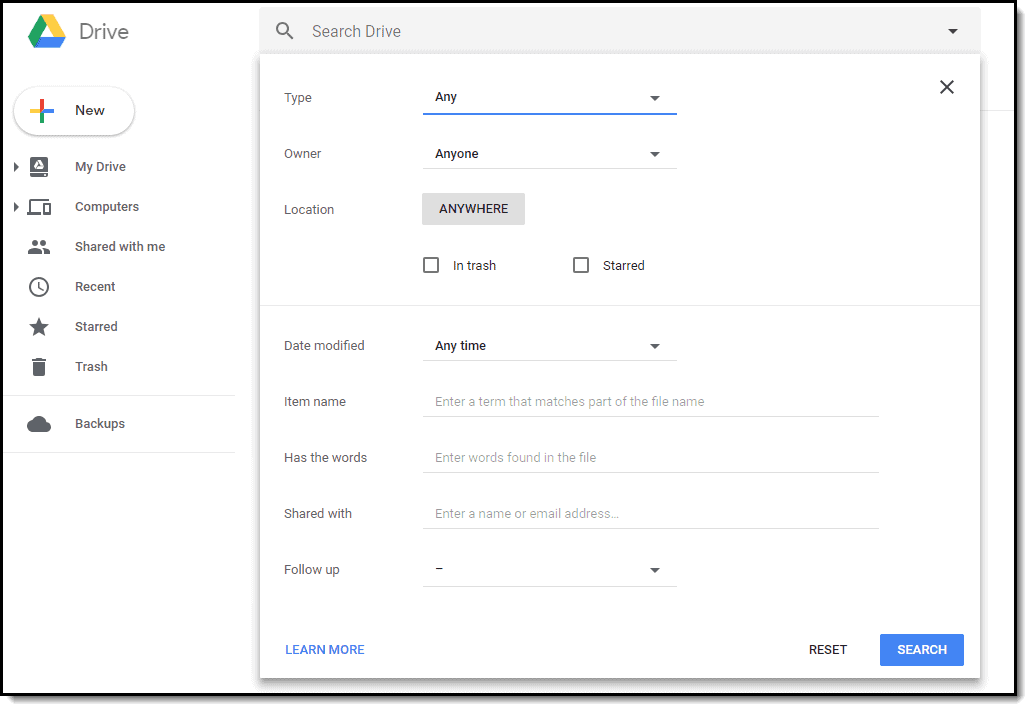
Google Drive share time limits
You are probably familiar with sharing files within Google Drive, but did you know you can set a time limit on a share? This feature is available for G Suite for Work and G Suite for Education.
Perhaps you want to share your syllabus with your current students but don’t want to share it with them once they leave your class next year since you always update the same file.
To set a time limit you share the file normally.
- Open Google Drive
- Choose the file or folder you want to share
- Enter the user or group you want to share with
- Click send when finished or uncheck notify people if you don’t want to sent them an email and click Ok
Tip: If sharing with a group and your email provider is not Gmail, you may not be able to successfully send a notification. Check out my post called Google Docs Sharing: Group Emails Fail To Send for why this happens and workarounds.
Now we can set an expiration for the share.
- Click the Share button again
- Click Advanced
- Click on the stopwatch next to the user or group

- Choose how long you want to share the file or folder. You can click on 7 days, 30 days, or click Custom date to choose the date you want to stop sharing the file.
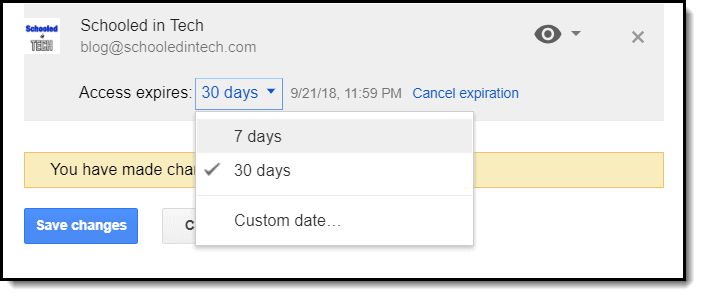
- Click Save Changes
Google Drive link sharing vs force copy link
There are times you want to share a document with someone and instead of reading your version, you want them to make a copy for themselves. This way they can take notes on or modify their file without affecting yours.
This probably sounds familiar if you are a Google Classroom user.
Instead of just sharing a link and telling users to make a copy of a Google Doc, you can customize you link so that it forces users to make a copy.
All you have to do is edit the link and add /copy to the end of the link.
For example, if the URL to your Google Doc is:
Change it to
Now when a user clicks the link they will see a screen like this. You can try the links above for yourself.
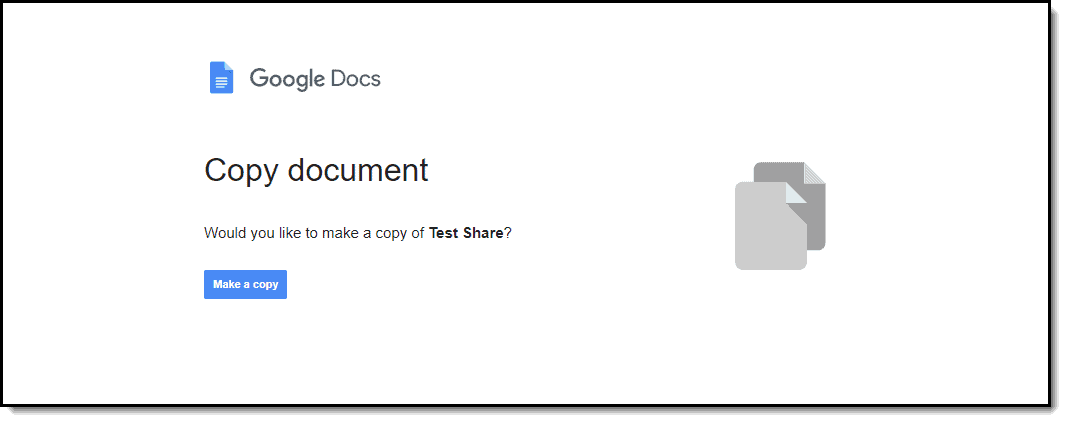
All the user has to do now is to click Make a copy and a copy of your file will be saved in their Drive and they will have full rights to edit it.
So often, being able to show screen examples within the documents we share is helpful for students. You don’t even need any special software to save a full or partial screenshot on a Chromebook. It’s built in. Let me show you how easy it is in my Take A Screenshot On A Chromebook post



